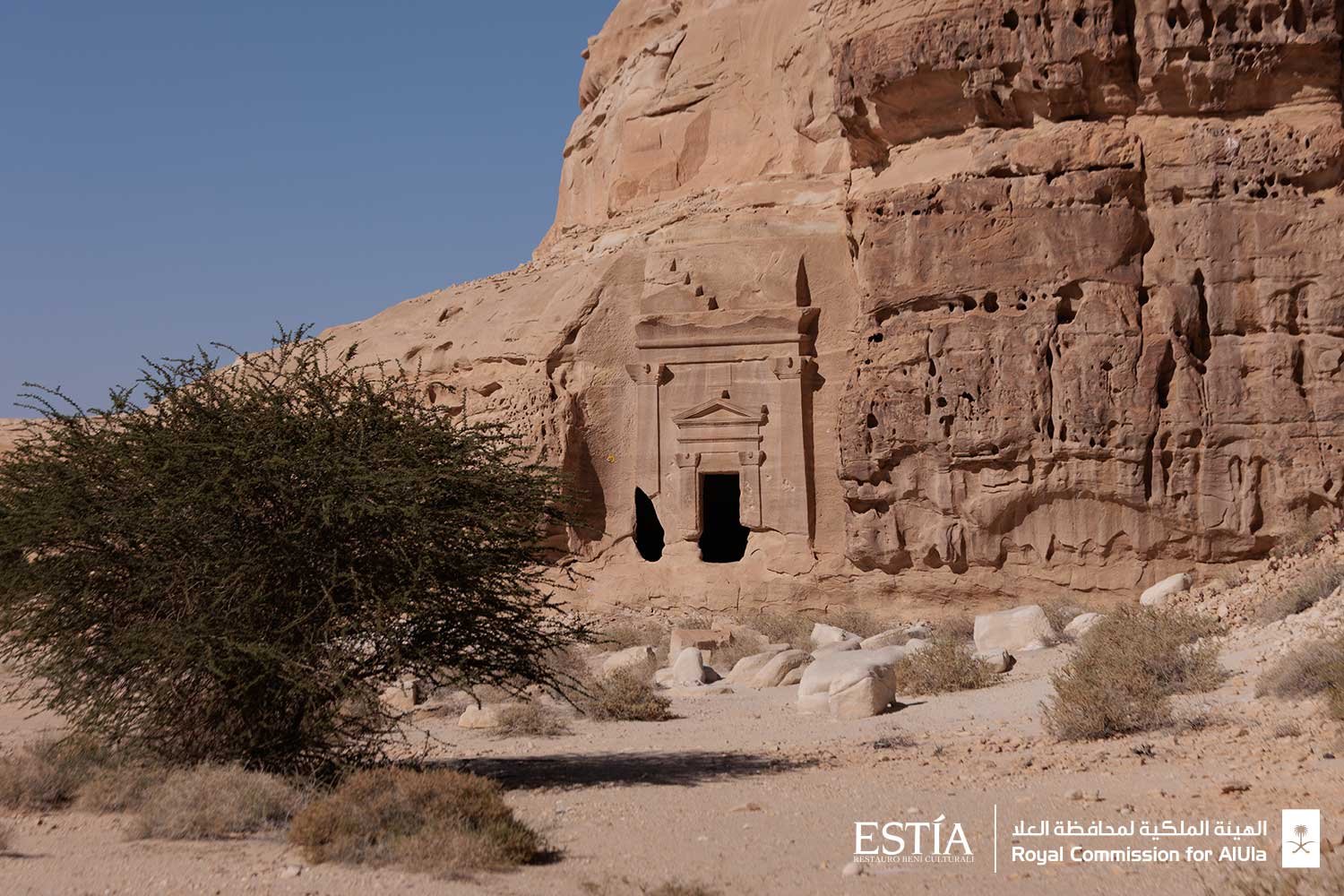
Tomb IGN12 belongs to the Proto-Hegra 1 type and faces southwest. It is located in sector III of the Jabal Mahjar necropolis but remains isolated on the northwestern slope of a small massif, about 200 meters north of tomb IGN13. The tomb is set back into the massif by about 1 meter, while the facade protrudes about 20-30 cm on the right side and 50 cm on the left, resulting in a non-parallel alignment with the plane created by the cleaning trenches. The vertical development of the tomb was hindered by the formation of the wall, which creates a recess with a horizontal walking plane above the facade’s summit.
The facade features two half-crowsteps, although only the lower steps are preserved. The underlying Egyptian entablature is fragmentary, with the torus moulding and architrave surmounting two pilasters with Nabatean-Corinthian capitals. The epigraphic cartouche protrudes about 2-3 cm from the facade plane, occupying nearly all the space between the architrave and the support for the central acroterion. The pediment and Greco-Roman entablature, though undecorated, are richly moulded. The entrance is rectangular with regular edges, raised about 1 meter above the ground, and preceded by a small protrusion running the entire width of the facade. The lower part of the facade is difficult to interpret, possibly unfinished or eroded over time. The right cleaning trench features a carved scene that could represent a hunting scene, while the left side of the facade shows significant erosion.
Les tombeaux nabatéens de Hegra vol. II Nehmé L. Académie des inscriptions et belles-lettres Paris 2015 pp.30-32
The Nabataean Tomb Inscriptions of Mada’In Salih Healey J.F. Oxford University Press Oxford 1993 p.95
“This is the tomb which Shubaytu son of ‘Ali’u the Jew made for himself and for his children and for ‘Amirat his wife. They may be buried in it by hereditary title. And no stranger has the right to be buried in it, and if any of the children of Shubaytu mentioned above or their legal heirs seeks to write for this tomb a deed of gift or any document, he will have no share in this tomb. And this was on the first day of Ab, the third year of King Maliku, King of the Nabataeans. ‘Abd’obodat son of Wahballahi made (it).”